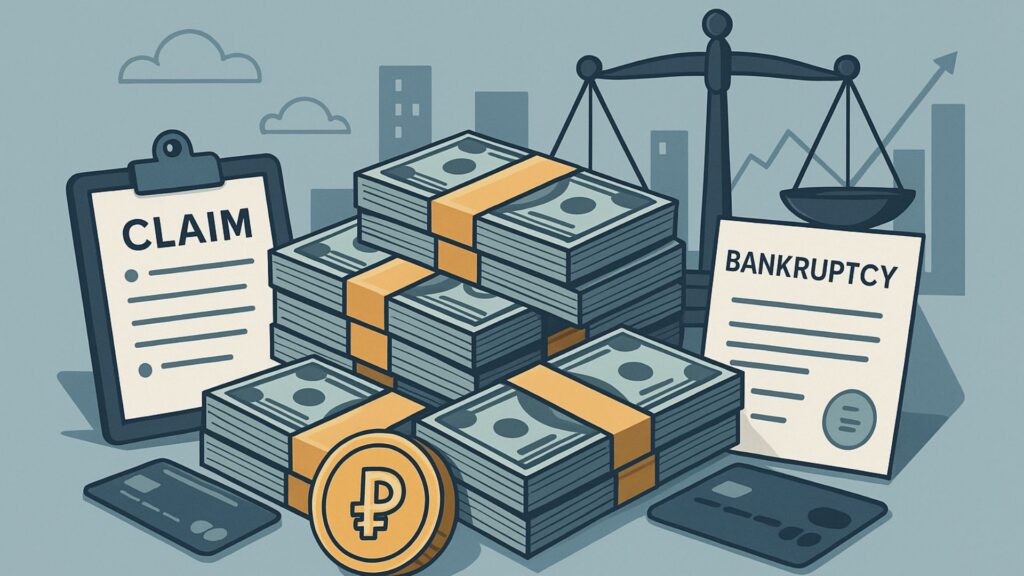Bankrupt crypto exchange FTX has confirmed a new round of cash distributions to creditors totalling $1.9 billion, expected to begin on or around September 30, 2025.
This follows a court-approved reduction in its disputed claims reserve, unlocking funds for claimants who meet eligibility requirements.
While this development marks progress in the platform’s long restructuring process, ongoing legal objections, pricing disputes, and concerns over market impact continue to shape the broader narrative.
FTX Payouts Begin in September: What Has Changed?
FTX has received approval from the bankruptcy court to begin the next stage of cash distributions to creditors, with payments due to start by the end of September.
The platform has reduced its claims reserve from $6.5 billion to $4.3 billion, freeing up $1.9 billion that will now be made available for disbursement. This adjustment reflects the resolution or disqualification of numerous disputed claims.
Eligible claimants include holders of Class 5 Customer Entitlement Claims, Class 6 General Unsecured Claims, and Convenience Claims that have been approved since the previous payout round.
The key date to determine eligibility is August 15, 2025. Anyone with a transferred claim must ensure the transfer is fully processed and listed on the official register before this cut-off.
To receive payment, claimants must complete Know Your Customer (KYC) verification, submit the necessary tax forms, and register with one of three designated distribution partners: BitGo, Kraken, or Payoneer.
So far, FTX has returned approximately $6.2 billion to creditors in two earlier rounds, $1.2 billion in February and $5 billion in May.
This third wave continues the court-approved plan to compensate creditors after the exchange’s collapse in November 2022, when financial irregularities triggered a liquidity crisis and ultimately led to criminal charges against founder Sam Bankman-Fried.
He was sentenced in 2023 to 25 years in prison for fraud but is now expected to serve less than 21 years due to good behaviour.
Despite this progress, concerns remain about how the repayments are being managed. One of the main points of criticism is the use of November 2022 crypto prices as the basis for repayment values.
Many creditors who held crypto on the platform before its collapse argue that this method undervalues their assets. For example, Bitcoin has increased nearly 500% since that time, meaning those compensated in fiat based on 2022 values are missing out on substantial unrealised gains.
Another issue is the treatment of creditors in so-called “restricted jurisdictions.” FTX has moved to limit distributions in 49 countries, including China, Russia, and Pakistan.
A Chinese creditor representing over 300 users and holding $15 million in verified claims has formally objected, arguing that such exclusions are neither legally justified nor consistent with alternative repayment approaches used by platforms like Voyager and Celsius.
The 49 jurisdictions represent around $800 million in claims, with China alone accounting for 82% of that amount. Over 70 formal objections have already been filed in response to this aspect of the plan.
Could Repayments Lead To Selling Pressure Or Market Disruptions?
While the news of the $1.9 billion release is a clear step forward for creditors, its broader impact on crypto markets remains uncertain.
One concern is that a significant portion of recipients may decide to liquidate their payouts immediately, potentially triggering selling pressure across major tokens.
This concern is particularly relevant for Bitcoin and Solana. Many FTX users held these assets before the collapse and are now receiving fiat-based compensation using historic prices.
For those who intended to hold long-term or had exposure to assets that have since appreciated, the decision to cash out or reinvest could introduce volatility, especially if repayments coincide with broader market fragility.
In Solana’s case, speculation continues around the status of previously unstaked tokens. FTX had moved over $31 million in SOL earlier this year, raising expectations that these funds might be used for repayments.
However, no official statement has been made about their inclusion in the September distributions. If these tokens are later sold or redistributed, the market impact could be significant.
There is also growing concern about scams and phishing attempts targeting creditors ahead of the payout.
FTX has issued repeated warnings urging users to avoid connecting wallets or sharing private keys in response to unsolicited messages. All legitimate communications are expected to go through official channels and verified distribution platforms.
The wider crypto community remains divided in its response. While some view the announcement as long-overdue progress, others remain frustrated by the slow pace, jurisdictional exclusions, and the price basis used for calculations.
These concerns have led to mixed reactions on social media platforms like X, where users continue to share their views, flag potential scams, and debate the fairness of the repayment terms.
In this context, traders and investors are watching closely. The disbursement of such a large amount of capital, combined with unresolved questions about asset handling, jurisdictional fairness, and future token sales, means the potential for price movement and sentiment shifts remains high as the distribution date approaches.
Conclusion
FTX’s approval to release $1.9 billion in its next round of creditor payouts is a significant milestone in its long and complicated bankruptcy proceedings.
The move unlocks fresh funds for verified users, but it also introduces new challenges, from jurisdictional exclusions and repayment pricing to concerns over scam risks and market pressure.
For traders and investors, the developments are not just about recovering funds, but also about anticipating how these repayments could ripple through the broader crypto ecosystem. As the September 30 distribution date nears, clarity, caution, and continued oversight will be essential.

